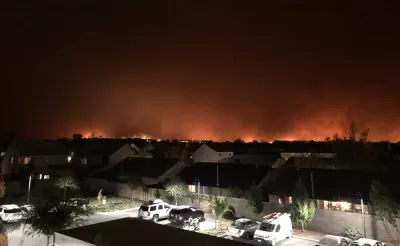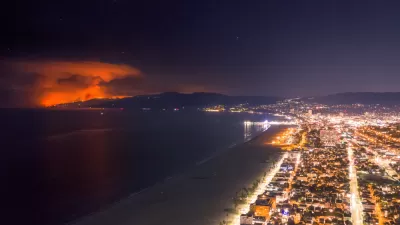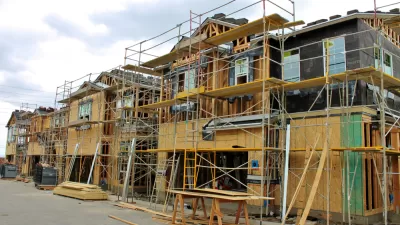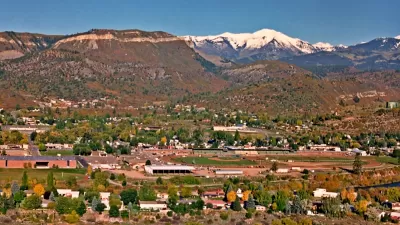An idea that is gaining support with the public as the state of California suffers through catastrophic fire season after catastrophic fire season is still a deeply difficult political proposition.

"The wildfires engulfing California this month have burned some of the same areas where other major fires have destroyed thousands of homes in recent years," writes Liam Dillon for the Los Angeles Times, but "no one has formally proposed robust limits on home building in areas at risk of wildfire."
There's been plenty of public hand wringing of the role of PG&E in what has been another disastrous fire season in California, as the utility responds to its role, and liability, in destructive fires of recent years by shutting down power to whole huge swaths of the state.
Despite the lack of conversation among political leaders about limiting home building in wildfire-prone areas, the idea seems to be catching on as fires repeatedly strike the same areas. Dillon reports:
In June, the UC Berkeley Institute of Governmental Studies released a poll that showed that three-quarters of California voters believe the state should restrain home building in areas at high risk of wildfires. The poll, prepared for The Times, revealed bipartisan support for such restrictions after deadly fires wiped out tens of thousands of homes across the state in the last two years.
The idea had strong support across party lines, geographic boundaries, generational divides, and disparate demographic groups. The state's political leaders, like Governor Gavin Newsom, are dismissive of the idea, however.
FULL STORY: The same areas of California keep catching on fire. What about limits on home building?

Maui's Vacation Rental Debate Turns Ugly
Verbal attacks, misinformation campaigns and fistfights plague a high-stakes debate to convert thousands of vacation rentals into long-term housing.

Planetizen Federal Action Tracker
A weekly monitor of how Trump’s orders and actions are impacting planners and planning in America.

Chicago’s Ghost Rails
Just beneath the surface of the modern city lie the remnants of its expansive early 20th-century streetcar system.

Bend, Oregon Zoning Reforms Prioritize Small-Scale Housing
The city altered its zoning code to allow multi-family housing and eliminated parking mandates citywide.

Amtrak Cutting Jobs, Funding to High-Speed Rail
The agency plans to cut 10 percent of its workforce and has confirmed it will not fund new high-speed rail projects.

LA Denies Basic Services to Unhoused Residents
The city has repeatedly failed to respond to requests for trash pickup at encampment sites, and eliminated a program that provided mobile showers and toilets.
Urban Design for Planners 1: Software Tools
This six-course series explores essential urban design concepts using open source software and equips planners with the tools they need to participate fully in the urban design process.
Planning for Universal Design
Learn the tools for implementing Universal Design in planning regulations.
planning NEXT
Appalachian Highlands Housing Partners
Mpact (founded as Rail~Volution)
City of Camden Redevelopment Agency
City of Astoria
City of Portland
City of Laramie





























